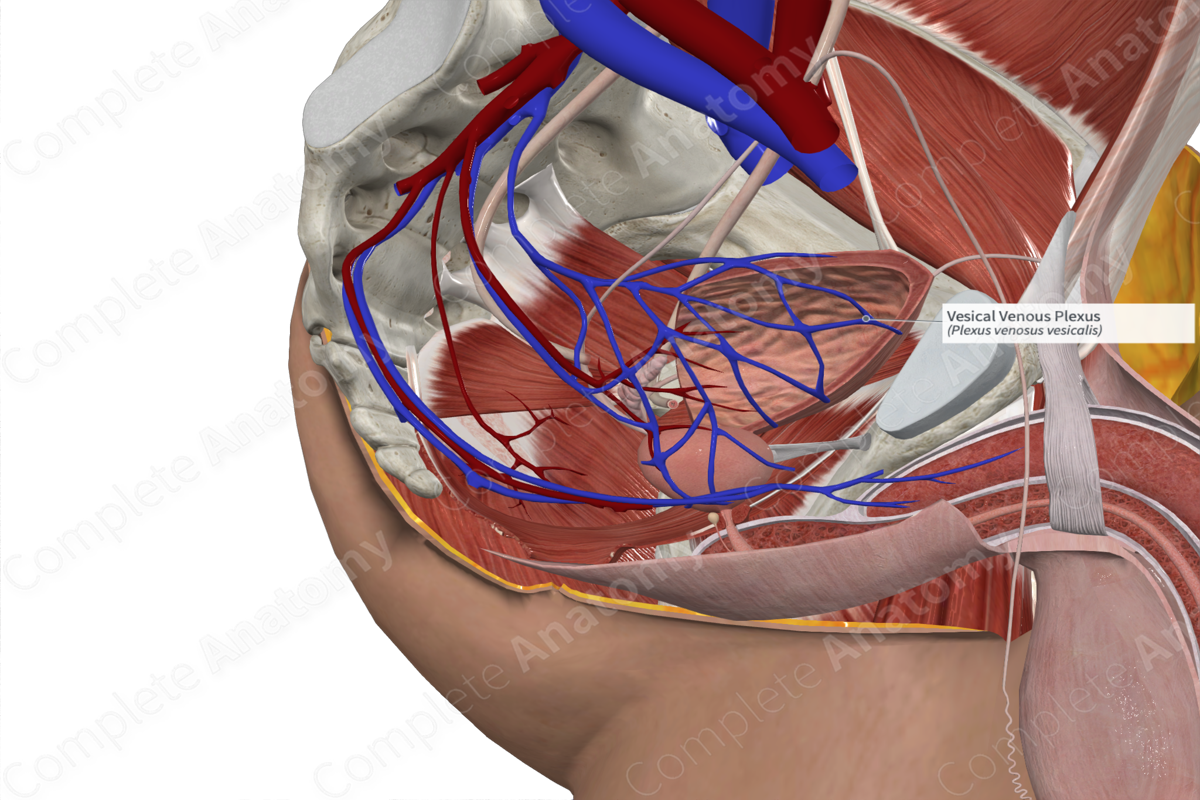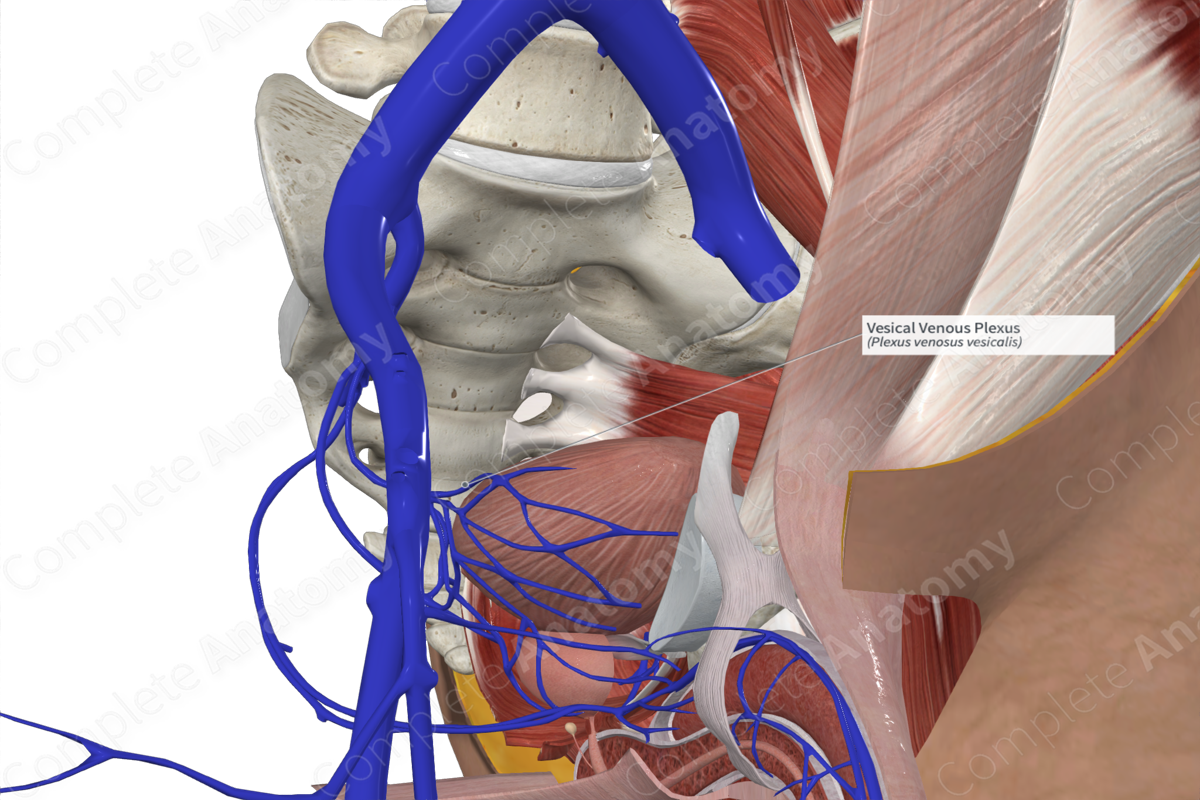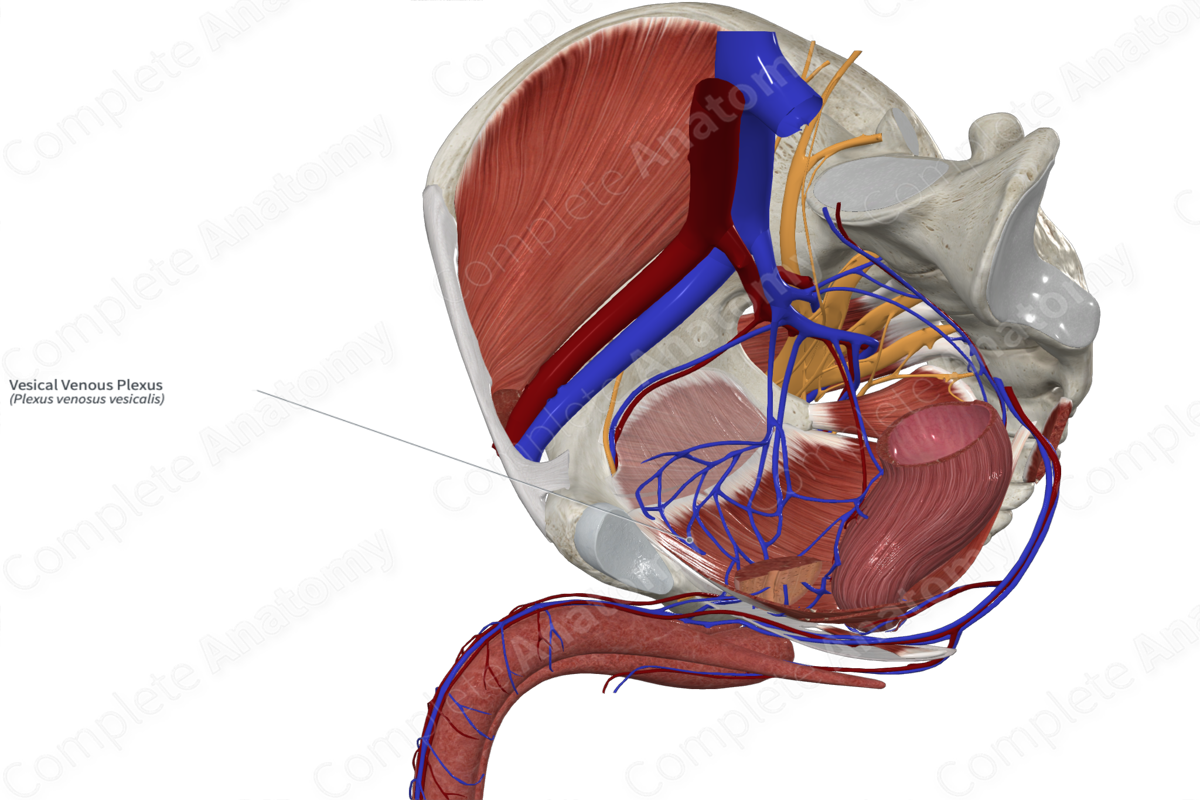
Quick Facts
Origin: A network of vessels that surround the fundus of the bladder and prostate (males) or the upper part of the urethra and neck of the bladder (females).
Course: The network of vessels surrounds the urethra and bladder and drains into the inferior vesical or lumbar veins.
Tributaries: Posterior scrotal vein (males) or dorsal vein of the clitoris and posterior labial veins (females).
Drainage: Bladder and prostate (males), or clitoris and urethra (females).
Related parts of the anatomy
Origin
The vesical venous plexus is a network of vessels that surround the upper part of the urethra and neck of the bladder in females. In males, the plexus of vessels surrounds the fundus of the bladder and prostate.
Course
The plexus communicates with the vaginal and uterovaginal plexuses (female) or prostatic plexus (male). The plexus drains mainly into the inferior vesical vein and into the internal iliac vein. Often, it may drain into the vertebral venous plexus via the sacral veins. For descriptive purposes the veins in the vesical plexus may be named the superior vesical veins and the inferior vesical veins.
Tributaries
In females, the dorsal vein of the clitoris and the posterior labial veins drains into the vesical venous plexus. In males, the posterior scrotal veins open up into the vesical venous plexus (Dorland, 2011).
Structures Drained
The vesical venous plexus is directly associated with the bladder. In females, the plexus drains the urethra and clitoris. In males, it receives tributaries from the prostate (Moore et al., 2013).
References
Dorland, W. (2011) Dorland's Illustrated Medical Dictionary. 32nd edn. Philadelphia, USA: Elsevier Saunders.
Moore, K. L., Dalley, A. F. and Agur, A. M. R. (2013) Clinically Oriented Anatomy. Clinically Oriented Anatomy 7th edn.: Wolters Kluwer Health/Lippincott Williams & Wilkins.
Learn more about this topic from other Elsevier products





